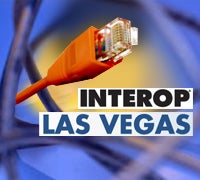 |
LAS VEGAS — Citrix President and CEO Mark Templeton is not bullish on the current state of the economy, especially for IT. When taking the keynote stage here at Interop, he had a very stark message for attendees: Things are not going well for IT and dramatic change is necessary.
“It’s time to rethink everything that we know about enterprise computing,” Templeton declared. “Thinking different alone isn’t enough either — we’re going to have to start doing things different.”
While economic experts debate whether the U.S. economy is in a full-blown economic crisis, Templeton isn’t shy about claiming that IT business is already in a recession.
In fact, he argued that the IT business has been suffering since 2001.
Before the dot-com bust, IT revenues typically grew at double-digit growth raters. Since 2001, however, IT revenues have only by 3 to 5 percent per year.
“Our cost models are out of whack … 80 percent of IT costs are fixed,” Templeton said. “Innovation is under-funded and the improvements we’re making are incremental.”
The way forward is a more open, service-oriented architecture, he said — but he also agreed that such as solution is far easier said than done.
“The complexity we have around legacy is weighing us down and is the biggest obstacle we have to getting to the service-oriented era,” Templeton said.
Templeton challenged audience members to think about their own environments and how different they might be if they had the luxury of staring from scratch today.
Without the benefit of starting over, IT can still undertake a number of initiatives to improve its fortunes and effectiveness.
For starters, users need to be given simple, fast and on-demand experiences to enable self service. They also will benefit from greater device, network and application independence, since they need increased flexibility.
[cob:Special_Report]Templeton also highlighted the need for improved security — particularly when it comes to securing content — and greater facilities for dynamic capacity, in which service levels can be increased or reduced as needed.
Above all, Templeton noted that IT needs to have predictable operating and capital costs.
As an example of how his vision can actually work in reality, Templeton cited the example of satellite TV and ISP provider DirecTV.
“They are 100-percent focused on monetizing delivery with IT,” Templeton said. “Wouldn’t it be great if you could wake up one day and tell your boss that the IT department made a profit?”
The key to enabling the delivery network is to optimize the first mile where the actual delivery controllers exist.
“You need to have an intense focus on delivery in IT,” Templeton said. “It’s where if things work, you’re a hero, and if they don’t, you’ll be a goat.”
The first mile is an area that Citrix operates in with its NetScaler product line. Citrix rolled out a new high-end NetScaler device earlier this week with its MPX appliance that delivers more than double the throughput of its previous offerings.
“We need a new mindset to think different,” Templeton said. “That should be followed by a new architecture that leverages legacy infrastructure to deliver on a new vision that is all about transforming your datacenter into a delivery center.”


